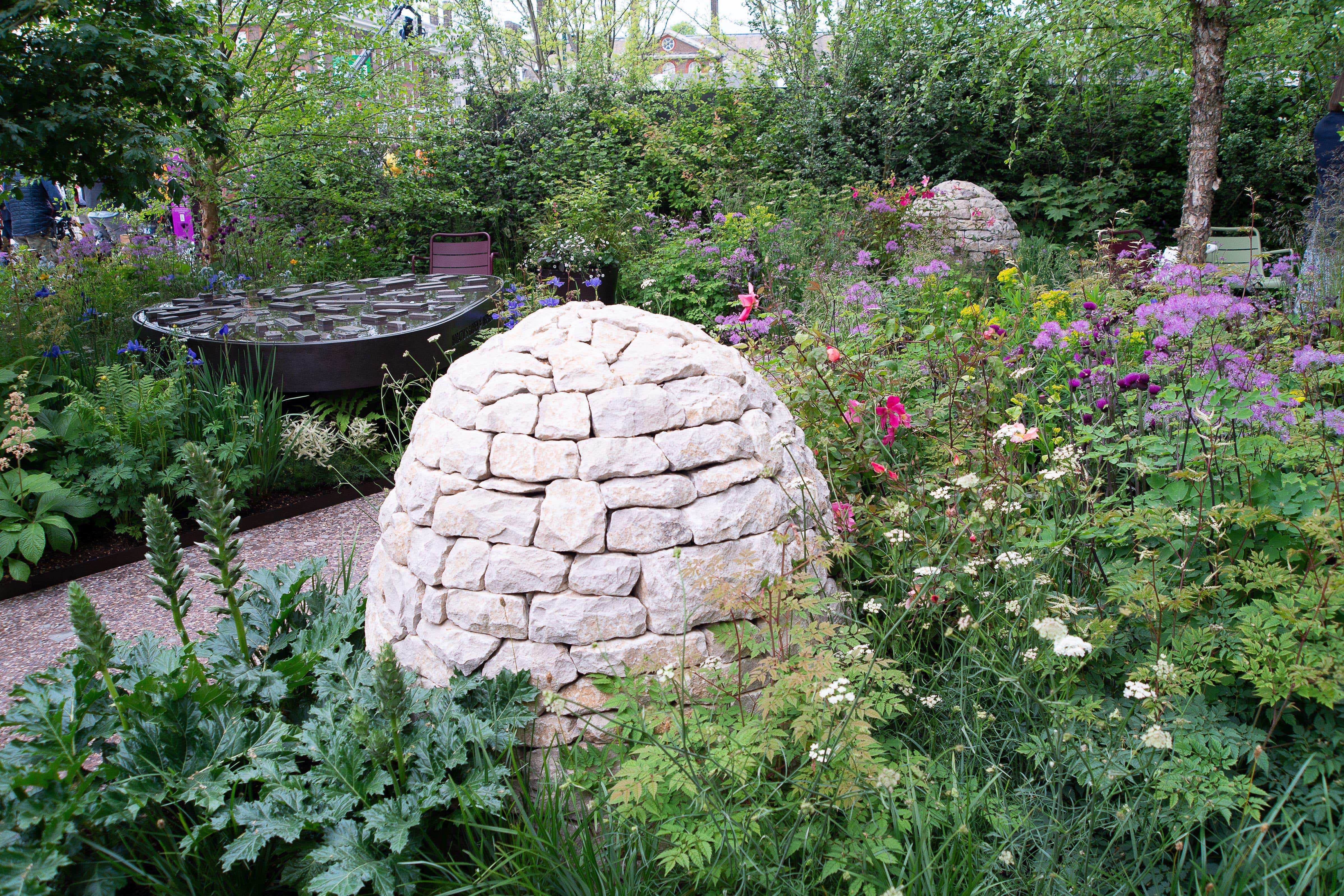How are charity gardens at RHS Chelsea Flower Show funded? The sponsor helping good causes bloom
Project Giving Back is sponsoring 15 show gardens this year. Hannah Stephenson digs into how it all works.

Your support helps us to tell the story
From reproductive rights to climate change to Big Tech, The Independent is on the ground when the story is developing. Whether it's investigating the financials of Elon Musk's pro-Trump PAC or producing our latest documentary, 'The A Word', which shines a light on the American women fighting for reproductive rights, we know how important it is to parse out the facts from the messaging.
At such a critical moment in US history, we need reporters on the ground. Your donation allows us to keep sending journalists to speak to both sides of the story.
The Independent is trusted by Americans across the entire political spectrum. And unlike many other quality news outlets, we choose not to lock Americans out of our reporting and analysis with paywalls. We believe quality journalism should be available to everyone, paid for by those who can afford it.
Your support makes all the difference.Have you ever wondered who funds the charity gardens at RHS the RHS Chelsea Flower Show, and what happens to them afterwards?
The gardens are a great way for charities and community projects to highlight their cause – but many wouldn’t exist without grants.
This year, Project Giving Back (PGB) is sponsoring 15 of the iconic event’s show gardens.
The philanthropists couple behind it all (who prefer to remain out of the spotlight) were inspired to start PGB after the pandemic, when RHS Chelsea Flower Show had been cancelled or postponed, and since 2022 have spent millions funding 27 Chelsea gardens.
“The founders came up with the idea that if they took on the cost of putting a garden on the show, it would benefit a charity, and designers would be inspired to design a garden that they love,” says PGB CEO Hattie Ghaui.
They’ve since provided between £3-4 million a year, says Ghaui – a garden grant can range from £70k to £500k.
How much difference has PGB made?
“Without Project Giving Back, I’m not sure how Chelsea would have bounced back from not having a show (in 2020) and then having a late show (in September 2021) because of the pandemic,” says garden designer and Samaritans volunteer Darren Hawkes, who designed the PGB-sponsored 2023 Samaritans’ Listening Garden at Chelsea to mark its 70th anniversary.
“The focus shifted with the show gardens, to more attention on their purpose and their legacy, not just their aesthetic but why we are doing this, who is it for, and how are they going to benefit? It really enabled those charity messages and narratives to sit at the forefront.”
He says the show helped to make the 70th anniversary of the Samaritans its most successful campaign. “The contact they had with the general public through media, spin-off events and just contact at the show dwarfed anything else that’s happened previously,” Hawkes reflects.
How does PGB choose gardens to sponsor?
Designers, in partnership with charities, are invited to submit ‘expressions of interest’, examining the due diligence of the charity, understanding the concepts and creative direction of the designer, looking at where the relocation plan will be.
“This year we had 130 expressions of interest. We took that down to a long list of about 75 and then a shortlist of around 30. In 2025, we will fund no more than nine gardens in total,” says Ghaui. Working in partnership with the RHS, the idea is that the funding will gradually reduce as other Chelsea sponsors return.
What happens to the gardens when the show is over?
Every garden sponsored by PGB is relocated, some in their entirety, others are repurposed into multiple sites. “We look to relocate the gardens to sites that either have a grounds team and a maintenance plan already, like hospitals and schools, or have up-and-running community programmes,” adds Ghaui.
Designer Andy Sturgeon’s 2022 The Mind Garden was moved to a disadvantaged area in Barrow-in-Furness, where it has become a reinterpretation in a space that has sat empty for 50 years. It now provides a ‘green lung’ in an urban environment.
“It’s made a big difference,” says Glen Mahaffy, peer support worker at Mind in Furness. “It’s a community orientated space and we’ve engaged really well with the local community.”
The garden gives people a sense of pride and helps their mental wellbeing, he adds: “It gives our volunteers somewhere to go and work. We have group sessions in the spring, summer and autumn and it’s a great venue for holding outdoor events.” They have had mindfulness sessions, therapeutic gardening groups and conversation groups there.
“It gives people a purpose, the opportunity to contribute to the upkeep of the garden, and benefits the lives of people who are otherwise stuck in the house in a sedentary existence,” says Mahaffy. “The sheer essence of having somewhere to meet adds a different dimension to what we offer at Mind in Furness.”What are the future plans?
As time moves on, PGB’s involvement with Chelsea will be reduced. Its final year will be 2026. After that, it will be documenting everything it’s done and it’s hoped the RHS, other philanthropists and charities can use its legacy to demonstrate the value of Chelsea.
Ghaui believes helping charities raise their profile is PGB’s biggest achievement.
“I’ve heard stories of charities that have raised over £800,000 in one night from just being at Chelsea,” she says. “It’s given charitable organisations access to an amazing event that they couldn’t otherwise pay for. And it certainly puts smaller charities on the map, such as Horatio’s Garden [who construct biodiverse gardens in spinal injury centres], which was catapulted into the spotlight.”